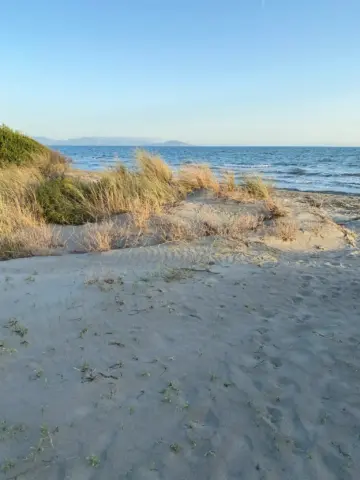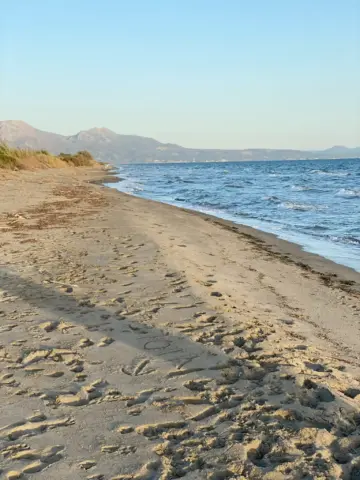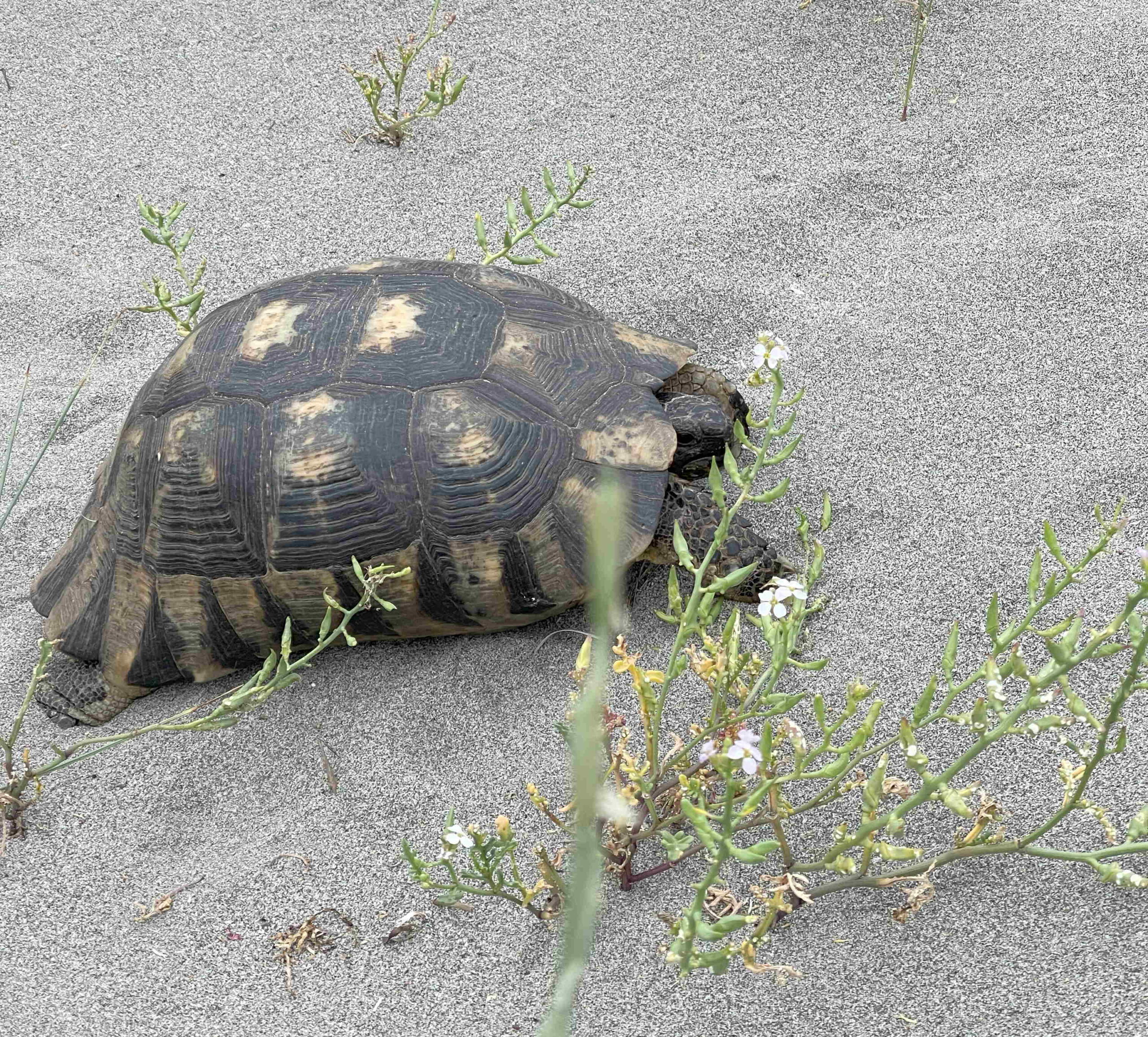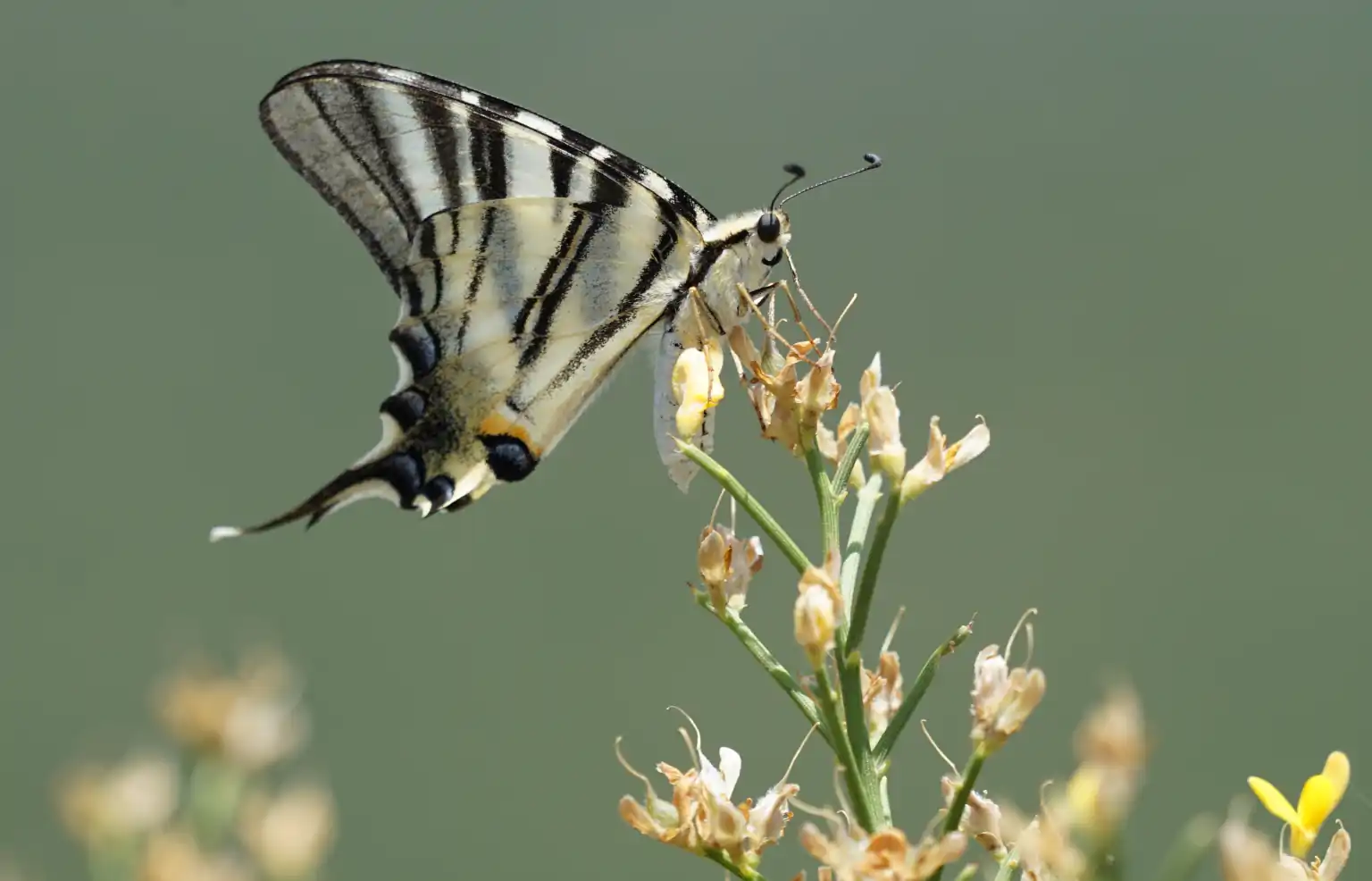Nature in the Evrotas Delta and the Beach at Villa Caretta
Villa Caretta – Turtle Beach
The beach, together with the surrounding nature, is an important area for animals and plants. For instance the beach is used by sea turtles as a breeding ground.
Villa Caretta is named after the loggerhead sea turtle (Caretta caretta). Between midnight and the early hours of June/July the females come ashore and lay their eggs on the beach.
The 15 km long beach around Villa Caretta is an important breeding area and is strictly protected as a Natura 2000 site. Nevertheless the beach can be used normally during the day, but vehicles are not permitted. In addition, no artificial light sources should illuminate the beach at night.


The loggerhead turtle (up to 120 cm long, 110 kg) and the green sea turtle (Chelonia mydas, up to 150 cm long, 180 kg) lay their eggs on the beach.
The females bury around 20-40 eggs the size of table tennis balls in the sand. You can see the turtles’ tracks from the water up the beach and back during a morning walk.
The young turtles hatch after 50-80 days. The volunteers from the Archelon organization protect the nests by attaching a grid and setting up bamboo sticks so that the nest is not plundered by nest robbers such as badgers, jackals or seagulls.
Tortoises are also native to the area. In total there are six different species of turtles in the area.


Natura 2000 area
The Evrotas Delta is a Natura 2000 area with a unique flora and fauna. Despite the agricultural utilisation of large areas, the area is classified as ecologically very valuable. For example, the wet meadows with a narrow network of channels east of the Evrotas estuary are a rarity.
To the west of the river, the area is largely used for agriculture. There, the wet meadows are now rare. As a result, the area of wetlands has decreased to only 1.3% of the protected area.
The delta has international status as a bird sanctuary with over 200 different species. For example, white-tailed eagles, black storks, little bitterns and Eleonora’s falcons can be observed here. It is the first European resting place for northbound migratory birds from Africa.
The Slender-billed Curlew (Numenius tenuirostris) has (had) a wintering area here. It is the rarest bird species in Europe. Its remaining population is only around 50 animals worldwide and is directly threatened with extinction or even already extinct. One bird was recorded here in 1999. However, as the birds are difficult to identify, there is still hope that they have survived to this day.
We strive to protect nature and make sustainable holidays possible.